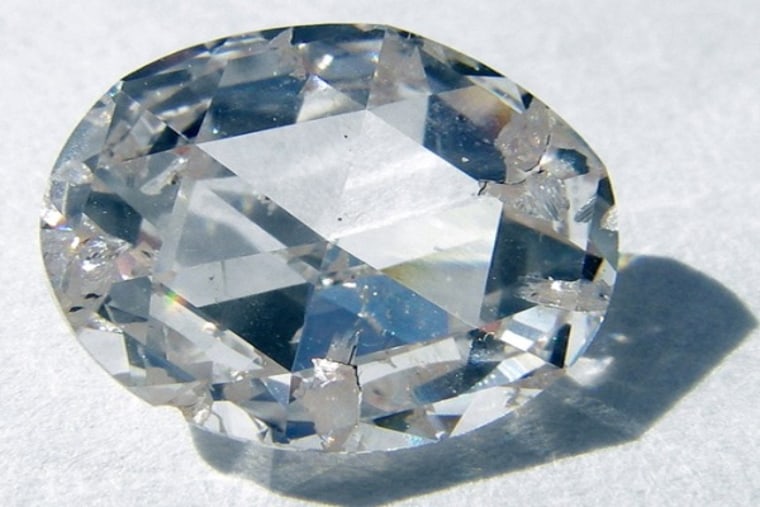A kind of "frozen smoke" made of diamonds — the lightest form of diamond known — could find use within electronics and sensors in everywhere from the human body to outer space.
The substances known as aerogels are the world's lightest solids, with some made up of as much as 99.8 percent air. Their hazy appearance earned them the nickname of "frozen smoke," but these airy materials can be surprisingly strong, holding up to thousands of times their own weight.
An aerogel is derived from a gel that had its liquid component replaced with a gas, leaving behind solid tangles of microscopic bead necklaces. These spongy materials often have excellent thermal, acoustic and electrical insulating qualities. The high surface area of these porous substances can also make them very useful as sensors, which need as much surface area as possible to detect their targets.
To create diamond aerogel, scientists at the Lawrence Livermore and Lawrence Berkeley national laboratories started with a precursor aerogel made from regular carbon whose pores were suffused with neon to help keep it from collapsing. They next blasted it with a laser and subjected it to high pressures in a diamond-lined cell. This combination of extraordinary heat and pressure changed the regular carbon in the aerogel into crystalline diamond.
"We have made, to the best of our knowledge, the lowest density form of diamond," researcher Peter Pauzauskie, a materials scientist now at the University of Washington, told TechNewsDaily. Unlike other forms of diamond, this aerogel could easily "be molded in a way very similar to plastic parts," he added.
This new material has a density of about 40 milligrams per cubic centimeter, making it about eight times less dense than cork and 40 times more dense than air. The microscopic diamonds that make it up are each 2.5 to 100 nanometers or billionths of a meter in diameter. (In comparison, a wavelength of violet light is about 400 nanometers wide.)
Diamond can emit electrons very efficiently, potentially making it useful in flat-panel video displays. In addition, unlike aerogels made from either regular carbon or carbon nanotubes, diamond aerogel is transparent and could help coat windows.
Diamond aerogels could also find use in quantum computers, Pauzauskie said. These machines exploit the strange properties of materials at the molecular level or below to carry out key computations much faster than regular computers.
This diamond aerogel has very different chemical properties from the most common forms of aerogel, those made from silica, the same material that makes up sand and glass. "Diamond, for instance, is much more biocompatible than glass, making it better suited for human implants," Pauzauskie said.
Diamond is also more resistant to corrosive acids and high temperatures than silica. As such, this new aerogel could find use in extreme environments, such as automotive engines or outer space, Pauzauskie added.
Currently, the method the scientists used to make diamond aerogel generates only very tiny samples, each only about 200 microns in size, or twice as wide as a human hair. "We are actively thinking of other processing methods," Pauzauskie said.
The scientists detailed their findings online May 9 in the Proceedings of the National Academy of Sciences.
